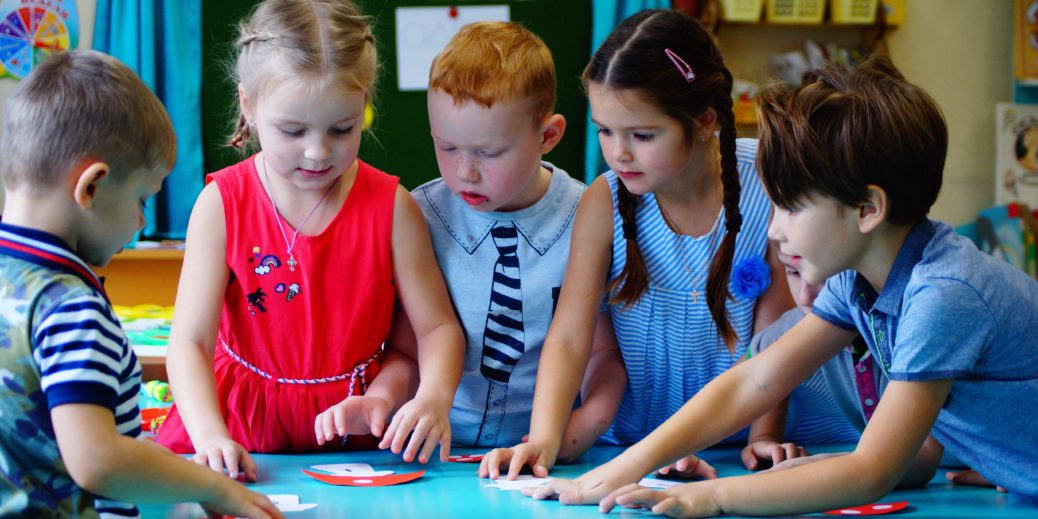I LOVE my class this year. Diverse. Capable. Sweet. Unique. Enthusiastic. Energetic. Hard-working. Funny. Lovable.
These are some of the words that come to mind when I think of my first graders. But one more word that also comes to mind is…chatty. Very chatty. We are a work in progress with this. And thank goodness, we are continuing to improve each week.
Now, don’t get me wrong, I believe a classroom should be FULL of rich, collaborative dialogue. Student discussion is vital, and our little guys need frequent opportunities to engage with peers and share their thoughts. I pride myself on having a dynamic, student-centered classroom that encourages this. To foster this kind of a climate, however, students also need to learn how to be effective listeners and independent workers. There are appropriate and inappropriate times for talking, and to get students to adhere to these boundaries, clear expectations must be set.
Here are 13 ideas/strategies to try when working with a chatty class:
1) Noise Level Chart: These visual aids provide students with clear expectations. I quickly call attention to where I’m moving the clip (silent, whisper, or inside voice) at the start of each lesson. Instead of having to constantly repeat myself, I can simply say “check the chart” or point to it if needed.
2) The “Quiet Music”: I play quiet music during silent independent working times. It is an audible signal that creates a calm, relaxing atmosphere. I alternate playlists containing classical music, sounds of nature, Native American flute/guitar instrumentals, etc.
3) Mood Lighting: During silent or whisper activities, I turn on a lamp with warm, gentle lighting as opposed to the school’s harsh florescent lights. This sets the mood as well.
4) Attention Grabbers: I call/signal for students’ attention in a variety of different ways. Otherwise, I get bored and so do the kids! Sometimes I use a bell, set of claps for students to echo, or fun attention grabbers such as Hocus Pocus, Everybody Focus!
6) Talking Objects: I conduct morning meetings daily. To encourage listening, I pass around a talking object (usually a gigantic Koosh ball or stuffed sea animal). Students know that the only person who should be speaking is the person holding the talking object.
7) Brain Breaks: I provide students with opportunities to release their energy. This helps them focus better during instructional time. Please see my article 30 Brain Breaks: Fight the Fidgeting.
8) Online Noise-o-Meters: Online noise meters detect the amount of sound heard on your computer’s microphone. Check out these noise-o-meters for display on your whiteboard so that students can self-monitor their talking. Try Bouncy Balls, Calmness Counter, or the Too Noisy App.
9) Cooperative Structures: Students need time to engage about their learning. I do turn and talks at carpet time, shoulder/face partner share-outs when they’re at their desks, as well as a variety of collaborative group and movement activities. Check out the Essential 5 of Kagan’s Cooperative Learning Structures for examples of some excellent structures.
10) Whole-Class/Team/Individual Incentives: I constantly give my attention to the positive behaviors I’m noticing in my class. Students work for meaningful rewards/incentives on a whole-class, team, and individual level. Try to ignore chattiness/shouting out by giving your attention to those making good choices.
11) S.H.A.R.K.: This is an acronym I created that stands for…
Sit up.
Hands in lap.
All eyes.
Respect to teacher/classmates.
Kind listeners.
When I need students’ attention at the carpet, I simply say “shark” and they clap their hands over their heads like a dorsal fin and drop them to their laps. It’s a fun visual/audible reminder that works! Plus, it’s adorable!
12) “Raise Your Hand” Reminder Chips: This is something I do with students who really struggle with shouting out. To promote self-control, I will toss them a foam math counter chip to hold in their hands if I notice they are having difficulty. The chip serves as a visual/tangible reminder to raise their hand the next time they’d like to speak. It helps control the impulse.
13) Take a Break: If a student is consistently having difficulty with the chattiness, I give them some time and space to reset. It’s important to be firm, fair, consistent, and caring when doing so. Have a sincere discussion with the student about your expectation, and allow them to return to the activity on their own accord. We want them to feel in control of their choices.
What kinds of things do you do in your class to alleviate the talking?
Please share in the comments section below! I’d love to hear from you.









